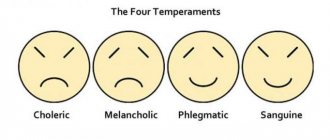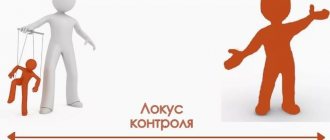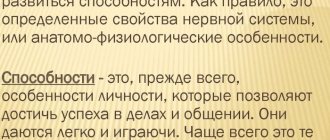Temperament as perceived by philosophers and scientists of antiquity
Even ancient philosophers argued that a person has a number of characteristics given to him at birth, which are subsequently formed into a set of traits or so-called character. It is impossible to significantly change these features; they can only be easily adjusted under the influence of society and education.
Scientists of that time could not imagine what temperament or character depended on, but they made attempts to substantiate their numerous theories in proportion to knowledge in medicine and psychology. The founder of the typology of temperaments was Hippocrates; he was the first to define each of the types that are still used today. But the famous doctor explained temperament by the predominance of one or another liquid in the human body.
Years later, European scientists tried to put forward their own typology based on the physical characteristics of people. This version was subject to much criticism in the scientific world and is now practically not used.
Temperament through the eyes of Hippocrates and Claudius Galen
Hippocrates defined personality temperaments, and his student and follower Claudius Galen wrote a large scientific treatise, where he described each type in detail and detail, specifying the liquid that is contained in the maximum quantity in human organs.
Based on Galen's theory, there were the following types of human temperament:
- sanguine - this person had a large amount of blood, which influenced his actions and emotions;
- phlegmatic - he was the result of the predominance of phlegm;
- choleric - had increased bile content;
- melancholic - suffered from an abundance of black bile in the body, corroding his internal organs.
Almost until the eighteenth century, this theory was perceived as the only correct one. And only the hard work of modern scientists dispelled the fantastic assumptions of Hippocrates, although the names and characteristics of temperaments have remained unchanged and are actively used.
Four types of human temperament
Temperament is a unique and individual psychological properties that reflect the general dynamics of a person’s psychological activity and manifest themselves regardless of its content, motives and goals.
Temperament does not change much throughout life, and, in principle, the psyche changes more, while temperament is constantly stable. The term “temperament” was introduced by Hippocrates. By temperament he understood both the individual mental and anatomical and physiological characteristics of people. Hippocrates, and after Galen, explained temperament as a specific behavior by the advantage of the psychology of one of the “vital juices” (4 elements):
- the advantage of the psychology of lymph (“phlegm”) makes a person slow and calm – phlegmatic;
- the advantage of the psychology of yellow bile (“poison, bile”) makes a person “hot”, impulsive - choleric;
- the advantage of the psychology of black bile (“black bile”) makes a person fearful and sad – melancholic;
- the advantage of blood psychology (“blood”) makes a person cheerful and active – sanguine.
In the history of natural science, a truly turning point was Pavlov’s interpretation of the types of nervous systems common to higher mammals and humans. Pavlov was able to prove that the type of highest nervous activity is the physiological basis of temperament , and is determined by the ratio of the main qualities of the nervous system: the mobility of the processes of inhibition and excitation, balance and strength that take place in the nervous system.
The genotype determines the type of nervous system. Pavlov identified four clearly defined types of the nervous system in psychology, that is, specific complexes of the basic qualities of nervous processes. A weak type of psychology is determined by the weakness of both inhibitory and excitatory character - melancholic. Balanced, strong with inert nervous processes - a “calm” type, phlegmatic. A balanced, strong, mobile type is a “living” type, sanguine. The unbalanced strong type is determined by an irritable strong character and a rather strong process of inhibition - the “uncontrollable” type, choleric.
Strength is the ability of the nervous system to perform some work without the need to restore resources, the ability of nerve cells to maintain their natural performance despite significant overstrain of the processes of inhibition and excitation.
A strong nervous system can withstand a significant load for a long time and, conversely, a weak system cannot withstand a long and significant load. It is believed that people with a strong nervous system are more resistant to stress and have more endurance.
According to arousal, the strength of the nervous system is characterized by the fact that it is relatively easier for a person to work in unfavorable conditions, after exhausting work he only needs a short rest to recuperate, he is persistent, can work actively, and
in an unusual environment he does not get lost .
In terms of inhibition, the strength of the nervous system is characterized by a person’s ability to restrain his activity, for example, to be patient and restrained, to show self-control, calmness, and not talk. Describing the specifics of different temperaments will make it possible to understand the characteristics of people’s temperament when they are clearly expressed, however, people with clearly expressed indicators of a specific temperament are quite rare; as a rule, people have mixed temperament in different combinations. Although, naturally, the predominance of characteristics of a certain type makes it possible to attribute a person’s temperament to a certain type.
Division into temperaments in modern psychology
Academician Pavlov made a great contribution to the development of psychology. As a result of research, he found out that a person from birth has his own type of nervous system, which determines his behavior. Moreover, this theory is equally effective for animals and people. Subsequently, Pavlov’s research became the basis for the work of Soviet and European psychologists. As a result, a scientifically based typology of human temperaments emerged:
- Sanguine. People of this temperament easily adapt to new conditions, are active and efficient. Most of them are friendly and have high communication skills. They are sensitive to the mood of others and are extroverts.
- Choleric. This temperament characterizes irritable and hot-tempered people. They get distracted from their work very quickly and find it difficult to concentrate. The expression of emotions in choleric people is violent and short-lived; they can also be considered extroverts.
- Phlegmatic person. Such people are very efficient, but it is difficult to switch from one thing to another. They are little emotional and are able to remain calm in any situation. All their movements are slightly slowed down, the same goes for facial expressions. Phlegmatic people are classified as introverts.
- Melancholic. Melancholic people are very sensitive, but not too active. They are touchy, but timid and inhibited. Such people have low productivity and have difficulty meeting new people. The slightest trouble causes violent emotions in them, paralyzing any activity.
To determine a person's temperament, it is necessary to consider him in relation to a number of properties. Psychology has a productive system that allows you to analyze the type of nervous system and classify it.
Methods for classifying psychotypes
There are several concepts for classifying psychotypes. Some of them are already outdated.
According to the processes of excitation-inhibition
Personality typology I.P. Pavlova is based on the fact that human behavior directly depends on the basic nervous processes - excitation and inhibition. The main parameters of these processes in various combinations form four types of higher nervous activity:
- sanguine - strong, balanced, agile type;
- phlegmatic - strong, balanced, inert type;
- choleric - strong, unbalanced, mobile;
- the only weak type is the melancholic.
Strength is the ability of the nervous system to resist the effects of strong stimuli. A strong nervous system is characterized by good performance, restraint, patience and perseverance. Weak ones are characterized by rapid fatigue, low endurance, and anxiety.
Balance depends on the correlation of excitation and inhibition with each other. A person with a balanced nervous system has discipline and the absence of sharp emotional fluctuations. An unbalanced person is incapable of waiting and suffers from sleep disorders.
Mobility determines the rate of alternation of inhibition and excitation. An active temperament is characterized by rapid adaptation, mental agility, active motor skills and speech articulation.
Galen's typology
The ancient physician Gallen suggested that the stable individual characteristics of a person and his behavior are in correlation with chemical processes in the body and depend on the predominance of one of the vital fluids in it. He identified the following types of temperaments:
- A phlegmatic person is a person whose body is dominated by viscous lymph (phlegm) - calm and slow.
- Choleric is a person who produces a lot of bitter bile (“chole” in other Greek) - hysterical, hot-tempered, rude.
- A sanguine person is an individual whose body is dominated by blood (“sangvis” in Latin) - active, cheerful.
- A melancholic person is one who has the most black bile in the body (“melena chole” in Greek) - anxious, sad, withdrawn.
According to the ratio of signaling systems
The first signaling system is conditioned reflexes that arise under certain environmental conditions. These are impressions and sensations from external conditions - natural and social, which allow you to form your own idea of the current situation and surrounding objects.
The second signaling system is higher, abstract thinking, closely connected with speech, which allows one to escape from reality and allows generalization
The typology in this case is based on the ratio of 1 and 2 signaling systems, as a result of which the following psychotypes are distinguished:
- Art. It is characterized by the predominance of conditioned reflexes over abstract thinking. A person with an artistic temperament perceives the surrounding reality figuratively, relying on feelings.
- Thoughtful. This psychotype is characterized by a predominance of abstract thinking over reflexes. People with this temperament are able to build logical chains and think abstractly.
- Harmonious. This is an intermediate psychotype, which is characterized by balance, an equal ratio of 1 and 2 signal systems. The majority of people belong to this type.
Kretschmer's constitutional theory
E. Kretschmer's constitutional typology of temperaments is based on the relationship between the structure of the body and the mental characteristics of a person. Depending on the prevailing emotional reactions, Kretschmer identified 2 groups of people
- Diadetic, which is characterized by changes in mood on the “cheerful-sad” scale. People from this group have a cyclothymic type of temperament with signs of the behavior of patients with manic-depressive syndrome: mood swings from joy to sadness, sociability, and a realistic view of the world.
- Psychoaesthetic, which is characterized by a change in sensitivity on the “sensitive-insensitive” scale. They are characterized by a schizothymic (close to schizophrenia) type of temperament. These are closed people, prone to emotional fluctuations from irritation to indifference, to abstraction, stubborn people who do not adapt well to new conditions and surroundings.
Basic properties of temperament
Defining temperament is impossible without eight aspects that characterize it:
- sensitivity;
- activity;
- ratio of reactivity and activity;
- plasticity and rigidity;
- reaction rate;
- emotional excitability;
- extroversion or introversion.
An experienced psychologist assesses the personality for each aspect and determines the type of temperament. The most important parameters are considered to be reactivity and activity. It’s worth talking about them in more detail.
Structure, properties and types of temperament
The results of studies of the internal structure of temperament conducted by B.M. Teplov and V.D. Nebylitsyn, led to the conclusion that human temperament has three main, leading components [33, 54]:
- General mental activity is the intensity and volume of human interaction with the environment (physical and social). “The degrees of activity are distributed from lethargy, inertia and passive contemplation at one pole to the highest degrees of energy, powerful swiftness of action and constant ascent at the other” [33].
- Features of the motor sphere - the state of activity of the motor and speech motor apparatus. It is expressed in the speed, strength, sharpness, intensity of muscle movements and speech of a person, his external mobility (or, conversely, restraint), talkativeness (or silence). According to Nebylitsyn, the features of the motor sphere can be either considered separately or included in the composition of general mental activity.
- Emotionality is a complex of properties and qualities that characterize the emergence, course and cessation of various feelings, affects and moods. Expressed in emotional sensitivity (susceptibility and sensitivity to emotional influences), impulsiveness, emotional mobility or stability (speed of change of emotional states, their onset and cessation).
Each of the listed components, in turn, has its own complex structure and various forms of manifestation. All psychological components of the structure of temperament are called properties of temperament.
Studying the properties of temperament, V.S. Merlin identified the criteria for classifying certain psychological characteristics as properties of temperament: “we have the necessary grounds to classify as properties of temperament individual characteristics that:
- regulate the dynamics of mental activity as a whole;
- characterize the peculiarities of the dynamics of individual mental processes;
- have a stable and permanent nature and remain in development over a long period of time;
- are in a strictly natural relationship, characterizing the type of temperament;
- are uniquely determined by the general type of nervous system.
Using the listed characteristics, we can with sufficient certainty distinguish the properties of temperament from all other mental properties of the individual” [29].
Currently, according to the results of research by Teplov, Merlin, Rusalov and others, the following basic properties of temperament are distinguished [1, 3, 8, 22, 24, 27, 36, 49]:
- Sensitivity (sensitivity) is determined by the least force of external influences necessary for the occurrence of a person’s mental reaction, and the speed of occurrence of this reaction.
- Reactivity is the strength of involuntary emotional reactions to external or internal influences.
- Activity – indicates how intensely (energetically) a person influences the outside world and overcomes obstacles in achieving goals (perseverance, focus, concentration).
- The ratio of reactivity and activity determines what a person’s activity depends on to a greater extent: on random external or internal circumstances (moods, random events) or on goals, intentions, beliefs.
- Plasticity indicates how easily and flexibly a person adapts to external influences.
- Rigidity indicates how inert and rigid a person’s behavior is.
- Rate of reactions - characterizes the speed of various mental reactions and processes, rate of speech, dynamics of gestures, speed of mind.
- Extraversion, introversion - determines what a person’s reactions and activities primarily depend on - on external impressions arising at the moment (extrovert), or on images, ideas and thoughts associated with the past and future (introvert).
- Excitability of attention - the less the degree of novelty attracts attention, the more excitable it is for a given person.
- Inhibition is the speed of cessation of a particular cognitive process.
- Switchability is the speed of switching cognitive processes from one object to another.
- Emotional excitability is characterized by how weak an impact is necessary for the occurrence of an emotional reaction and at what speed it occurs.
- Emotional stability is the stability of an individual’s mood to external and internal influences.
- Impressiveness is the emotional sensitivity of an individual, his sensitivity to emotional influences, the ability to find ground for an emotional reaction where such ground does not exist for other people; the strength of influence of various stimuli on a person, the time they are stored in memory and the strength of the reaction to them.
- Emotionality is the speed and depth of a person’s emotional reaction to certain events.
- Impulsivity is the speed with which emotion becomes the motivating force of an action or action without first thinking it through and consciously deciding to carry it out; manifests itself in unrestrained reactions, in their spontaneity.
- Emotional lability is the speed with which a given emotional state ceases or one experience changes to another. How quickly and strongly a person “lights up” and how quickly he “fades away” depends on emotional lability.
- Resistance is resistance to unfavorable conditions, the ability to resist all internal and external conditions that weaken or inhibit the activity started.
It should be noted that the listed properties of temperament in most sources are side by side and not systematized.
Many researchers consider temperament and the criteria of its typology from the point of view of two or more properties of temperament. So, for example, J. Strelyau considers reactivity and activity to be the main fundamental dimensions of temperament, G. Eysenck – extraversion / introversion and emotional stability / instability (neuroticism) [50], S.L. Rubinstein bases the typology of temperaments on impressionability and impulsiveness [49], etc.
The most developed is the typology of temperament by I.P. Pavlova, described on the basis of the properties of temperament identified by his followers. An example of such characteristics of temperament types is given by V.D. Nebylitsyn [33]:
- The sanguine temperament is characterized by fairly high neuropsychic activity, variety and richness of facial expressions, emotionality, impressionability and lability. At the same time, the emotional experiences of a sanguine person, as a rule, are shallow, and his mobility under negative educational influences leads to a lack of proper concentration, haste, and sometimes superficiality.
- The choleric temperament is characterized by a high level of neuropsychic activity and energy of action, sharpness and swiftness of movements, as well as strength, impulsiveness and vivid expression of emotional experiences. Insufficient emotional and motor balance of a choleric person can result, in the absence of proper upbringing, in incontinence, hot temper, and inability to self-control under emotional circumstances.
- The temperament of a phlegmatic person is usually characterized by a relatively low level of behavioral activity and difficulty in switching, slowness and calmness of actions, facial expressions and speech, evenness, constancy and depth of feelings and moods. In case of unsuccessful educational influences, a phlegmatic person may develop such negative traits as lethargy, poverty and weakness of emotions, and a tendency to perform only habitual actions.
- Melancholic temperament is usually associated with such behavioral characteristics as a low level of neuropsychic activity, restraint and muted motor skills and speech, significant emotional reactivity, depth and stability of feelings with weak external expression. Due to these characteristics, with a lack of appropriate educational influences, a melancholic person may develop emotional vulnerability, increased to the point of painfulness, isolation and alienation, and a tendency to experience difficult internal experiences of life circumstances that do not deserve it at all.
At the same time, many researchers completely abandon the typology of temperament, believing that the number and variety of various types of temperament are too great: the classical classification, which includes four types of temperament, does not cover all possible options. In addition, in order to develop a final typology of temperament, it is necessary to completely complete the study of the properties of nervous processes, and to address this problem only based on final information about the biological foundations of temperament.
Thus, at the present stage of development of science, human temperament has not been sufficiently studied.
Next: General characteristics of emotions
Reactivity in psychology: definition
It is difficult to say when psychology became a serious science and began to consider a person’s personality taking into account all aspects of temperament. But the scientific community believes that Wolf Solomonovich Merlin was the first to introduce such a concept as reactivity in psychology. This gave impetus to further research into the psycho-emotional differences of individuals, which eventually resulted in a fundamental scientific theory.
At the moment, it can be argued that reactivity in psychology is the uncontrolled reactions of an individual to any stimuli of an external and internal nature. The intensity and duration of these reactions largely determine a person’s temperament. Subsequently, psychologists came to the conclusion that emotional reactivity is responsible for performance and productivity. In psychology, this has acquired particular importance; many large corporations in the West use the concept of reactivity when selecting new personnel.
Reactivity and speed of decision making: is there a relationship?
Based on the results of numerous studies and tests, psychologists have found that the speed of decision-making and reactions to various life situations depends on reactivity.
People with high reactivity often make decisions under the influence of emotions and the moment; many of their conclusions and reactions are incorrect. But in a critical situation, they can save the life of not only one person, but also many others. The same cannot be said about individuals with low reactivity. They think about every decision for a long time and are not able to make it at a specific moment under the influence of stimuli from the outside world.
How to determine the type of temperament?
It is very useful to learn to calculate not only your own type (or types), but also the characteristics of those around you. Knowing your mental complex and its characteristics provides the following advantages :
- easier search for a suitable profession or hobby;
- establishing internal balance with your “I”;
- understanding your own strengths and weaknesses;
- awareness of the reasons why certain traits are very difficult to change;
- the ability to predict one’s behavior in unfamiliar situations;
- at the end of the day, it's just interesting and educational.
As for determining alien types, the advantages are as follows:
- understanding others and the ability to find an approach to people of different temperaments;
- improved relationships with relatives, friends, spouses and increased chances of a promising romantic acquaintance;
- the opportunity to realize your career by finding a common language with colleagues, superiors and clients;
- a more noticeable and successful influence on others (speaking and communication in general);
- predicting the standard behavior pattern of new acquaintances;
- a chance to get rid of addiction in relationships, victim status;
- a better understanding of how to raise your children.
The situation is reminiscent of a poker game. A person ignorant of his temperament does not understand the value of even his own cards. But those who study this topic will clearly see the entire layout of the game and easily calculate the opponent’s card combination.
To find out your type, just take a temperament test. If you need to understand another person, just watch him. Some properties will be clear immediately (how actively he gestures, for example), others will take more time.
Formula for Reaction Intensity in Emotional Reactivity
Since reactivity in psychology is a reaction to an external stimulus, it would be natural to assume that it has a certain strength. In the modern world, there is even a formula according to which you can determine the degree and intensity of the reaction.
In people with low reactivity, intensity is in direct interaction with the strength of the impact. The more pressure you put on such a person, the more intense his reaction.
Otherwise, everything happens to people who are easily excitable. The intensity of their reaction is absolutely independent of the strength of the impact. Even slight pressure triggers an intense reaction in the individual. This makes highly reactive people unpredictable and difficult to manage.
Psychological personality types: extrovert and introvert – connection with temperament
Extra- and introversion, like the type of temperament, is not an absolute indicator, but a set of individual traits and a tendency to a certain type of reaction. Extroverts are predominantly directed outward, replenishing energy through interaction with the outside world, introverts are depleted in the outside world and are replenished in contact with themselves. This characteristic is expressed to varying degrees in different people. In addition, there are ambiverts - people who, depending on the circumstances, behave either as extroverts or as introverts.
According to Eysenck, extroversion and introversion directly depend on people's temperaments. Choleric and sanguine people are extroverts, melancholic and phlegmatic people are introverts. However, since each person to some extent contains traits of all types, in some cases there are phlegmatic and melancholic people with pronounced extroversion, sanguine and choleric people with predominant introversion. There are also “masks” due to upbringing, because of which extroverts can behave like introverts and vice versa. “Masks” do not change natural agility, but they limit its manifestations and, as a result, usually make a person less productive.
Reactivity in psychology: examples of manifestation in everyday life
In order to have a complete understanding of reactivity, let's give a simple real-life example. Let's say you're dreaming of a vacation after a hard year of work. Your friends are also going to relax, but one goes to the mountains, and the other dreams of a lazy beach holiday in a warm country. Both of them invite you to come with them, but after much deliberation you decide to go on a trip to the sea and the sun. At that moment, when you are ready to voice your decision to a friend, he begins to argue that you must go with him and have no right to do otherwise. This is where your reactivity matters a lot. What will you do? Will you begin to resist the pressure and abandon your already planned and much-desired vacation on the beach, going to the mountains as a protest? Or stick to the original plan, no matter the pressure put on you?
People who are capable of doing harm to themselves are characterized by increased reactivity and often draw the wrong conclusions from the situation. Moreover, the opponent’s personality does not play a role in making a decision; it can be a close friend or a stranger. A tendency to make hasty and incorrect decisions is revealed in those people who have increased reactivity. In psychology, this is considered to be a constant, which is used as a starting point in determining a person’s temperament.
Reactivity and activity: features of the relationship
It has long been proven that the productivity of any human activity is determined by the ratio of reactivity and activity. In psychology, this was expressed in several formulas that emerged as a result of special and lengthy research. Highly reactive individuals have little activity, since they cannot work with concentration and are constantly distracted by the slightest external stimuli. In addition, this type is also affected by internal stimuli - thoughts, emotions, memories. All this significantly reduces labor productivity.
Individuals with low reactivity usually have the highest activity. They are able to solve one problem until a result is achieved, without being distracted by anything in the world around them. Such people are able to work for weeks and months until they get what they want. Scientists who have given the world great discoveries are often classified as this type.
The psychological reactions of many people cannot be controlled, but with certain knowledge, it is possible to predict a person’s behavior and draw conclusions about his capabilities on the way to the top of his career.










